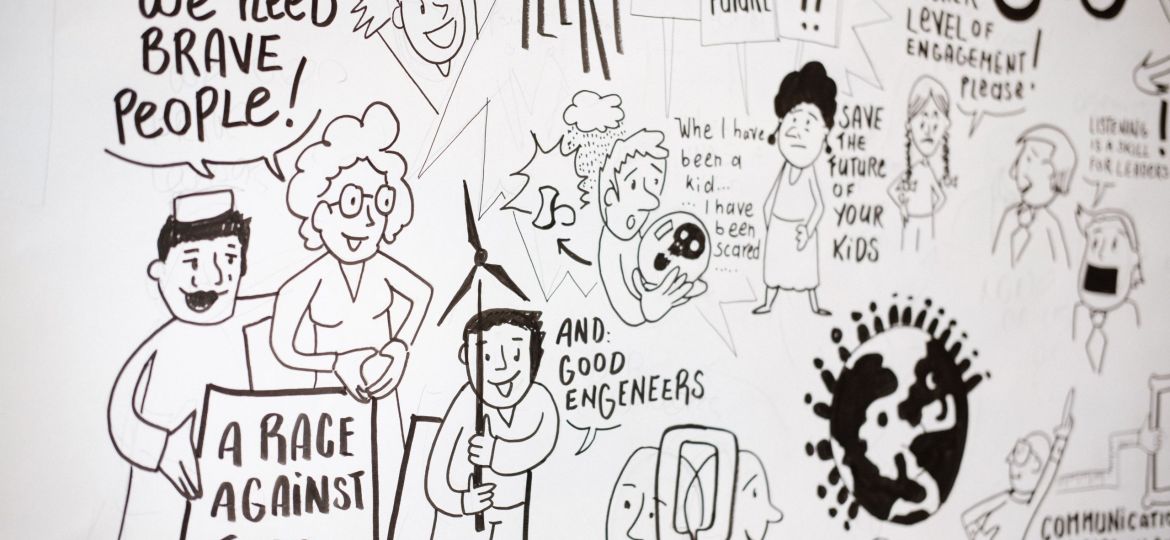
Transparency is the backbone of the Paris Agreement. It builds confidence in the entire process – trust that your neighbour is also working hard. It also provides clarity on the world’s collective progress and promotes ambition.
The new Enhanced Transparency Framework (ETF) agreed in Katowice builds on and enhances existing Monitoring, Reporting, and Verification (MRV) arrangements. All the hard work done so far on MRVs will not be wasted, as it will help countries prepare for this next phase of monitoring and reporting. The new framework was discussed extensively by participants in break-out sessions at this week’s Global NDC Conference – this blog provides some detail, and pointers to further resources.
The ETF includes three elements:
- Reporting. There are two mandatory requirements: greenhouse gas inventories, and progress tracking of NDCs. Developed countries must also provide support to developing countries in the form of finance, technology transfer, or capacity building.
- Technical review. This verifies the information provided by countries. The aim is not to be intrusive, but to build a country’s capacity over time, helping it to identify information gaps and capacity building needs.
- Multilateral facilitative consideration. This is for nations to inform the international community about what they are doing and share best practice and experience. Transparent information on the progress of a country’s efforts also promotes accountability.
The transparency rulebook
The transparency rulebook adopted in Katowice – referred to as the Transparency MPGs (Modalities, Procedures, and Guidelines) – provides clarity on how the ETF will operate. The exact format of information required in the ETF’s new Biennial Transparency Reports (BTRs) will be decided between now and the end of 2020 to ensure data is comparable. All of this will come into force from December 2024. After that, the rulebook (or MPGs) will be reviewed and updated no later than 2028.
Transitioning to the new ETF
Katowice recognised the burden reporting places on many countries and seeks to streamline the process. BTRs will replace biennial reports and national communications, combining both in one report featuring a structured summary and additional information (e.g., adaptation efforts). The current international assessments and reviews and the international consultation and analysis process will be replaced by technical expert reviews, and facilitative, multilateral consideration of progress.
Structured summaries
BTRs will include a structured summary, the format of which is currently being negotiated. The summaries will include information on indicators; emissions; Land use, land-use change, and forestry (LULUCF); International Transfer of Mitigation Outcomes’ (ITMOs) – emission reduction units traded through a market mechanism; and a self-assessment of whether the target has been achieved. Each country will need to describe their methodology and accounting approach in their BTRs and detail expected and achieved greenhouse gas reductions as a result of climate actions and policies (not mandatory for developing countries).
The Global Stocktake and reporting cycle
Every two years, Parties submit reports on progress towards their NDC, which will inform the Global Stocktake (national data aggregated for a global picture of whether we are collectively meeting the 1.5-degree goal). The stocktake will happen every five years, the outcome of which will inform the next NDC reporting cycle. New and updated NDCs will be submitted in 2020 and 2025, and the first global stocktake will take place in 2023.
Wider benefits of climate monitoring and reporting
There are good reasons to institutionalise climate monitoring and reporting beyond the UNFCCC process. National benefits include access to new information (including across sectors and activities), capacity building, and the establishment of structures and systems for better data gathering and sharing. It can also help engage different stakeholders, increases awareness and political will for climate action, and identify needs, gaps, and difficulties to access the right support through successful funding bids. The evidence gathered can also inform climate policies and strategies, and synergies can be found with other reporting needs (e.g., Sustainable Development Goals). Introducing legal and regulatory frameworks can facilitate this work.
Support for developing countries
While there are some notable exceptions, such as Chile, Colombia, Costa Rica, Ghana, Kenya, and South Africa, many developing countries still lack reliable data and monitoring structures. The transparency rulebook is the same set of guidelines for all countries, but it also recognises the different starting points, offering flexibility and support to countries that need it.
Developing countries will receive financial and technical support to prepare their first and subsequent BTRs. The Global Environment Facility (GEF) has also been requested to help address challenges and streamline the process, and the Capacity-building Initiative for Transparency (CBIT) and the Consultative Group of Experts will also offer support.
This blog is a rapid round-up of transparency discussions from Days 2 and 3 of the Global NDC Conference 2019.


